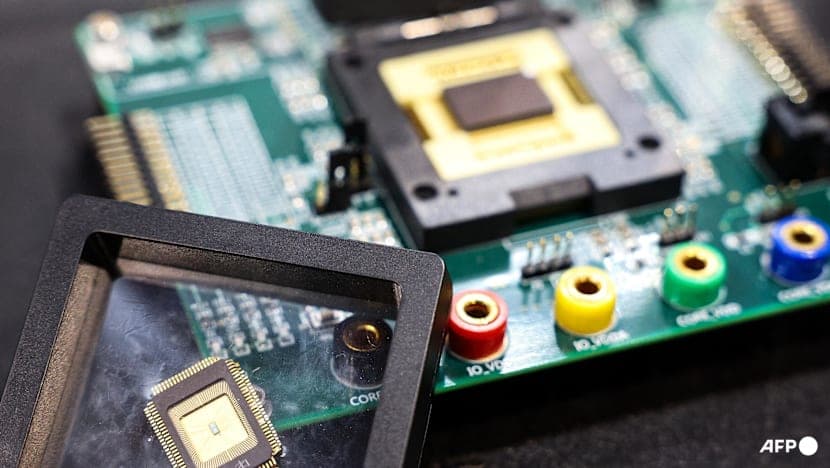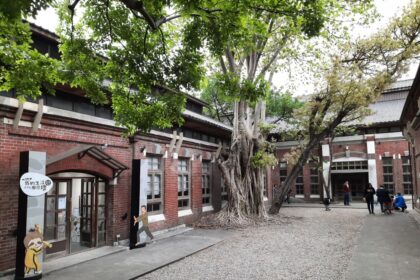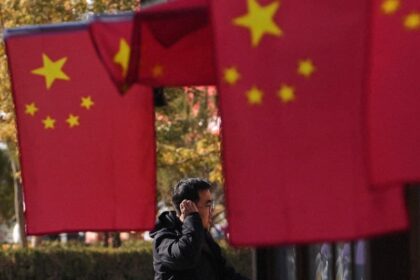A measured tightening, not a blanket ban
Taiwan has updated its export control list to cover a broader range of advanced technologies used in semiconductor production, a move that underscores the island’s central role in the global chip economy while stopping short of an outright ban. The revised list adds 18 categories, including high end 3D printers, advanced semiconductor manufacturing tools, electron microscopes, and quantum computers. Officials describe the update as an annual technical revision intended to prevent military proliferation under international cooperation frameworks. The policy requires export permits for listed items and takes effect after a 60 day public notice period.
- A measured tightening, not a blanket ban
- How the permit system works
- Is this aimed at China
- The Huawei and SMIC factor
- What the controls mean for tools and fabs
- Global stakes and the AI race
- Can controls slow but not stop China’s progress
- A new diplomatic lever
- Risks, compliance, and loopholes
- What comes next
- Key Points
The timing is consequential. Taiwan is home to the world’s premier contract chip producer, TSMC, and it manufactures nearly all of the most advanced logic chips used for artificial intelligence systems. The United States has progressively tightened restrictions on the sale of advanced chips and chipmaking tools to China since 2022, and allied governments in Japan and the Netherlands have coordinated controls on key equipment. Taiwan’s step brings its controls into closer alignment with partner rules and addresses growing scrutiny of how sensitive technologies can be diverted for military use.
An official from the Ministry of Economic Affairs’ International Trade Administration stressed that the update is about scope and procedure rather than politics. The official said the changes mirror partner rules and are designed to keep sensitive technologies from illicit end uses. After stating that the list applies globally under a permit system, the official added that the policy is not aimed at a single market.
International Trade Administration official: the update is “not targeted at a specific country,” and it follows allied practices to prevent misuse of strategic goods.
Why now
Allied export rules have evolved quickly in the past three years, driven by concerns that advanced chips can power military applications such as surveillance, missile guidance, and offensive cyber capabilities. Washington expanded its measures in 2023 and 2024, then again in early 2025, including rules that place tighter limits on advanced graphics processors, training compute for AI, and chip design software. New frameworks like the AI Diffusion Rule sort countries by risk level and seek to close loopholes that allowed sensitive technologies to reach restricted entities through intermediaries.
Taiwan’s industry is deeply intertwined with this system. The Foreign Direct Product Rule (FDPR) gives the United States reach over foreign items made with US technology, which covers many chips and tools used by Taiwanese firms. In practice, this means Taiwanese exporters already screen customers and end uses. The new list mostly formalizes that practice within Taiwan’s own legal system and gives regulators a more granular way to assess permit applications.
What is on the list
The draft revision describes a set of dual use items that have clear civilian functions but can also support weapons programs or sensitive research. Items include:
- Advanced semiconductor manufacturing tools used for wafer fabrication and process control
- High end 3D printers that can produce complex parts with tight tolerances
- Electron microscopes capable of atomic level inspection and metrology
- Quantum computers and related systems with potential code breaking or advanced simulation uses
Exporters will need to obtain permits before shipping these items, with approvals granted when the risk of military diversion is assessed to be low.
How the permit system works
Taiwan’s regime relies on ex ante screening rather than blanket prohibitions. Companies that intend to export a controlled item must apply for a government permit that documents the buyer, end use, and end user. Regulators can request additional information, deny requests that present unacceptable risks, or condition approvals on follow up verification. Officials say the objective is to keep legitimate commerce moving while creating a legal net to catch suspicious transactions.
The 60 day notice and compliance expectations
The revision enters force after a 60 day public notice period. During that time, firms update internal compliance programs, train staff, and adjust sales pipelines. Taiwan’s trade authorities have reminded manufacturers that they must comply with export control regulations, verify counterparties, and carefully assess transaction risks. These requirements mirror practices common across allied jurisdictions and reduce the chance that sensitive goods are misdirected or re exported through intermediaries.
Aligning with partners
Chip supply chains are split across countries. Dutch lithography leaders, Japanese toolmakers, US chip designers, and Taiwanese foundries are all essential. Controls tend to be most effective when applied together. The Netherlands has limited extreme ultraviolet lithography sales to China for several years, Japan tightened controls on key tools, and the United States uses FDPR to extend its reach. Taiwan’s list update helps close gaps by linking domestic licensing requirements to the same classes of goods already covered by partners, which reduces incentives to shop for the easiest route.
Is this aimed at China
Taiwanese officials emphasize that the rule is country agnostic. On paper, any buyer anywhere needs a permit to import the listed goods. That said, the policy landscape makes the impact on China hard to miss. In June, Taiwan placed Huawei and Semiconductor Manufacturing International Corp on its entity list along with hundreds of other organizations. The addition requires Taiwanese firms to seek government approval before shipping to these companies or their subsidiaries, just as they would for entities under sanctions in Russia, Iran, or Pakistan. Taken together, the new item controls and the entity screening point to tighter oversight of sales that could advance Chinese military or security objectives.
Beijing claims Taiwan as its territory, and cross strait tensions have grown as the chip sector has become a strategic priority. Taiwan’s government has also moved to deter talent poaching and technology theft. Policymakers in Taipei say these steps are part of a broader effort to safeguard national security while maintaining open trade where possible.
The Huawei and SMIC factor
Huawei and SMIC are central to China’s push to reduce reliance on foreign technology in AI and advanced computing. After earlier US measures restricted Huawei’s access to leading edge chips, Huawei turned to domestic suppliers. Reports last year that a TSMC manufactured component turned up inside a Huawei AI card sparked inquiries about indirect supply routes. Taiwanese businesses were instructed to suspend certain shipments to suspected intermediaries, and the United States told TSMC to halt deliveries of specific advanced chips to Chinese customers pending reviews.
The inclusion of Huawei and SMIC on Taiwan’s entity list means Taiwanese companies now face the same kind of licensing scrutiny seen in the United States. For both firms, the tighter screening limits access to Taiwanese expertise in areas like process integration, equipment servicing, and specialist materials, even when items are not at the cutting edge. Analysts expect the near term effect on Huawei and SMIC to be modest because they already face multiple layers of controls. Over time, the combined restrictions can slow the pace of progress by reducing choice and raising costs.
What the controls mean for tools and fabs
Chip manufacturing is a complex series of steps that push the limits of physics. Even when export controls do not touch the most advanced nodes, they can affect yield, reliability, and productivity by shaping access to auxiliary equipment. High precision 3D printers can accelerate prototyping and the production of complex components used in fab tools. Electron microscopes are essential for process development and failure analysis at scales near individual atoms. Quantum systems can aid simulation, optimization, and cryptographic research. Tighter licensing for these categories, combined with entity screening, heightens barriers for buyers that present proliferation risks.
Controls on equipment tend to be more durable than controls on chips. Machines require installation, calibration, and regular maintenance. Vendors often need to send personnel on site or deliver software updates tied to service contracts. That gives authorities more opportunities to monitor end use and cut off support if violations are found. Chips and software are easier to smuggle or acquire through front companies, which is why governments have focused attention on the supply of irreplaceable tools where oversight is stronger.
Global stakes and the AI race
Export controls are only as effective as the technological edge of those imposing them. Over the past two years, restrictions have disrupted parts of China’s chip ecosystem, but they have also spurred intensive efforts to build domestic capability. Chinese companies have rolled out new chip designs, explored alternative architectures, and trained competitive AI models by optimizing around hardware limits. Research output in areas like design, materials, and packaging has accelerated, and public investment has poured into domestic tools and equipment.
Allied governments view these trends through a security lens. The goal is not to freeze commercial technology in place. It is to reduce the flow of sensitive capabilities that can be used against national interests. Controls are more likely to slow advances than to stop them. This is why policymakers pair export controls with incentives for domestic production, workforce development, and research centers. Taiwan’s update sits within this broader framework. It signals alignment with partner objectives while preserving room for legitimate trade under permits.
Can controls slow but not stop China’s progress
Evidence from recent years points to a mixed outcome. Controls raise costs, complicate supply chains, and create friction for targeted entities. China has nonetheless made progress in chip design and system engineering. It is investing in memory, power devices, and packaging, and working around constraints through techniques like chip stacking and clustering.
Huawei’s founder has publicly argued that engineering can narrow performance gaps without access to the best chips. He framed the company’s strategy as a combination of system level innovation and learning from constraints.
Huawei founder Ren Zhengfei: “There’s actually no need to worry about the chip issue. By using methods like stacking and clustering, the computational results are comparable to the most advanced levels.”
Controls can still achieve strategic goals even if targeted firms adapt. Slowing progress at the top end of compute can buy time for allied research and industry support to take effect. The key is sustained coordination, clear definitions of sensitive items, and credible enforcement.
A new diplomatic lever
Semiconductors have become a tool of statecraft. Taipei has already tested the idea of using export controls as diplomatic leverage. After a dispute with South Africa over the status of Taiwan’s liaison office, authorities briefly announced restrictions before pausing them to allow for renewed talks. That episode exposed both the potential power and the risks of using chips in diplomacy. Taiwan’s dominance in advanced fabrication gives it unique influence, yet overuse of unilateral measures could motivate partners and customers to diversify away faster.
Taiwan’s foreign minister has said export controls remain on the table as an option in extreme cases, while stressing that Taipei would prefer not to use them in that way.
Foreign Minister Lin Chia lung: “This is indeed among the options under assessment, though that does not necessarily mean they will all be implemented.”
For now, the government is signaling caution. The updated technology list and the entity restrictions on Huawei and SMIC fit within multilateral efforts, which reduces the perception that Taipei is weaponizing trade. That balance matters to both industry and partners.
Risks, compliance, and loopholes
No control regime is airtight. Investigations have documented the use of shell companies, third country transshipment, and gray markets to obtain restricted chips. Taiwan’s permit system tries to mitigate those tactics by demanding more detailed end use declarations and by holding exporters responsible for verification. The government can deny permits or revoke them if red flags emerge, and it can coordinate with partner agencies when cross border intelligence is needed.
For companies, the practical steps are clear. Strengthen know your customer processes, vet distributors, and build internal systems to track red flags. Document end user statements and follow up after delivery when required by a license. Expect more scrutiny of maintenance contracts, software updates, and remote support for installed equipment. This is especially relevant for the 18 newly listed items, which include tools and systems that can be repurposed for military research.
Over the next two months, industry groups will seek clarifications on technical thresholds, licensing timelines, and the scope of related technologies. If the past is a guide, regulators will refine guidance while keeping the core structure intact. The end state is a predictable permitting regime that allows trade to proceed where the risk is manageable and blocks it when the risk is not.
What comes next
The immediate next step is the end of the 60 day notice window and the start of formal permit reviews for the new items. Taiwanese chip and tool makers will continue to map their customer bases against the revised rules and the entity list that already includes Huawei and SMIC. The United States is expected to keep adjusting its framework, and allies in Europe and Asia will calibrate their measures as technology advances. Taipei’s export control architecture will evolve in step with that environment.
For buyers that present low risk, approvals should continue, though with more paperwork. For buyers tied to military programs, acquisitions will be harder to arrange and sustain. The broader competition in AI and advanced computing will continue on two tracks, one focused on slowing sensitive flows and the other on building domestic capability among all major players.
Key Points
- Taiwan added 18 categories, such as advanced chip tools, 3D printers, electron microscopes, and quantum computers, to its export control list
- The update creates a permit requirement after a 60 day notice period and aligns with allied rules to prevent military proliferation
- Officials say the policy is global in scope and “not targeted at a specific country,” with approvals granted case by case
- Huawei and SMIC were added to Taiwan’s entity list in June, requiring licensing before Taiwanese firms can ship to them or their subsidiaries
- Controls on tools are harder to evade than controls on finished chips, since equipment needs installation, service, and software updates
- China’s chip sector has adapted in places, but combined US and allied controls have added friction and slowed top end progress
- Taiwan signaled that chip controls can be a diplomatic option, though leaders say they prefer not to use them for coercion
- Enforcement will focus on stopping front companies, transshipment, and gray markets, with exporters expected to strengthen verification












